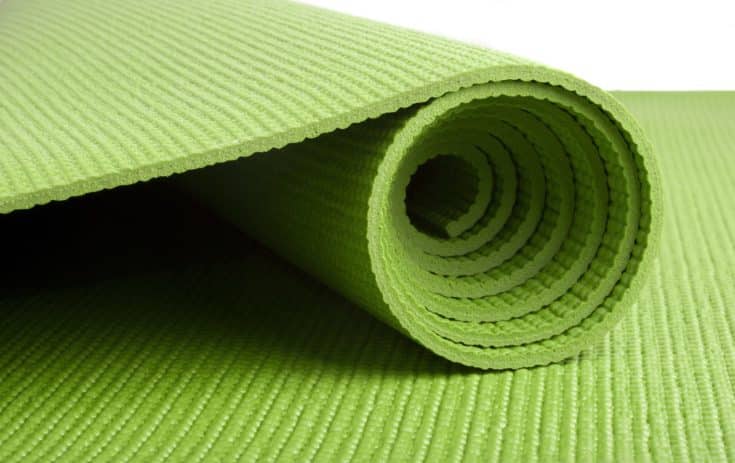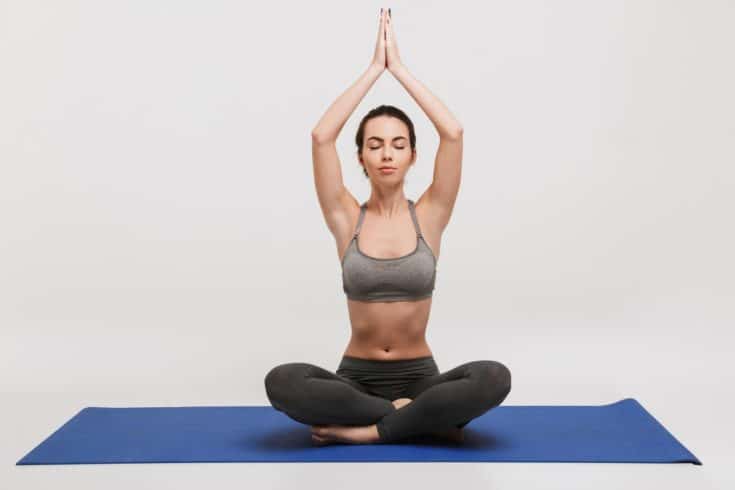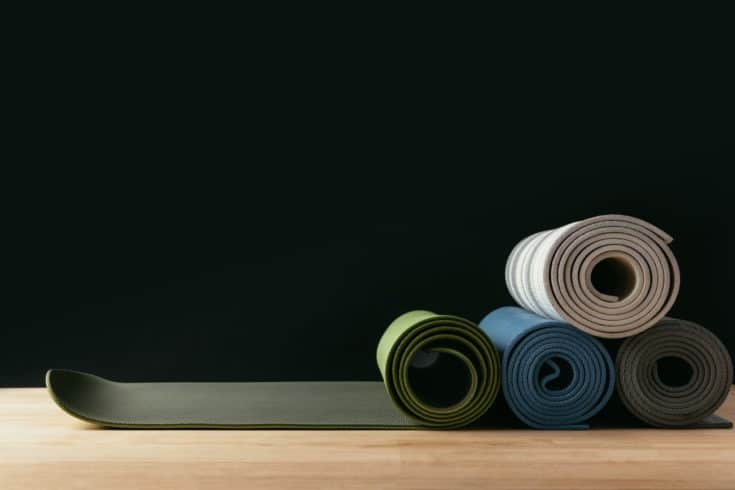The truth of the matter is that it’s perfectly normal to mistake a yoga mat for a Pilates mat if you’ve never had to shop for one before. They are mostly made from the same materials, so they’re easy to confuse, but they do also have a lot of different characteristics, like their thickness levels and their densities. In order to be able to tell the difference between a Pilates mat vs a yoga mat, you should know the short definition of these two practices, at the very least.
Once we’ve got the definition out of the way and you’ll know what each of these practices implies, you will gain a better understanding of what that right mat for each should be like in order to provide you with the support, balance levels, and cushioning you need.
Pilate Mat VS Yoga Mat Comparison
| Pilate Mat | Yoga Mat |
|---|---|
 |
 |
A Closer Look
As we’ve mentioned before, there are some slight differences between these two types of mats, but probably the most noticeable one is the thickness and cushioning that each of these provides. Because of that, we thought it was first important to define Pilates and yoga, as understanding the practice will show exactly what the right characteristics of each mat are for your particular practice.
Pilates Mat
What Is Pilates?

Pilates is a relatively new concept, at least when we compare it to yoga. The story of Pilates dates back to 1920 and was created with the purpose of physical rehabilitation. Pilates is all about maintaining a healthy body and becoming more flexible without actually having to build bulk. Pilates is more about resistance and less about gaining strength, as all the exercises are done on mats and machines.
There are six main concepts that revolve around the idea of Pilates: control, centering, concentration, flow, breathing, and precision. As these six elements come together, Pilates can help a person improve their posture and develop balance.
Thickness & Density

Pilates mats are typically thicker and with a higher density when compared to yoga mats. That’s because Pilates means rolling on your back quite a lot, which means that you need a mat that has plenty of cushioning to comfort and support you when doing so, otherwise you would end up with terrible back pain.
Pilates mats are also denser because they need to support you throughout a series of very different exercises that mostly rely on your back and your stomach for posture. If you were to try doing Pilates on a yoga mat, you are guaranteed to end up with joint pain, as it would feel like you’re basically rolling on the floor. For the most part, Pilates mats are at least 6 mm in thickness which, if we were to compare it to a yoga mat, is a lot. Pilates mats that can provide the best cushioning possible are between 8 and 15 mm in thickness.
As far as size is concerned, Pilates mats are quite similar in size to yoga mats, but some of the models are also wider because you can use the extra cushioning and “roll around” space for your practice.
Construction & Materials

As far as materials are concerned, Pilates mats are mostly made from PVC or foam. Foam is known for providing a great deal of cushioning and it is often the preferred material in Pilates mats. PVC is known for being more durable, but there is plenty of controversy around the impact that plastics have on the environment, with a lot of people also being skeptical about whether these mats are safe to use for one’s health.
Yoga Mat
What Is Yoga?

Yoga is a discipline that’s been around for a very long time. It originated in India and it’s a combination of physical activities and a certain state of mindfulness that helps you become more aware of the present and the things around you. Yoga is just as much about physical health as it is about mental state. That means that yoga can be therapeutic from multiple points of view.
Aside from looking to bring you into the present moment by combining mindfulness with meditation, yoga is also about training your body to become more flexible. There are many different types of yoga that you can practice, but the general idea is that yoga is focused on repetitive movement.
Thickness & Density

There’s no real standard yoga mat thickness, it all depends on what’s best for you. Yoga mats are generally available in a lot of thickness options, and purchasing one of yourself needs to take into account a variety of different aspects that are related to your skill level, what type of yoga you practice, or if you have any medical conditions or are prone to pains that might require using a mat with a bit more cushioning. Yoga mats can have several thickness levels, the most common ones being ⅛ and ¼-inch ones.
Construction & Materials

Yoga mats are typically made from one of three materials. There are PVC mats, known for their durability and good grip, but also for their controversy seeing as how they are basically plastics. You can also buy foam mats, which are known for their comfort and cushioning, but also for being more prone to wear and tear and for their slight off-gassing. Most people these days seem to prefer the third option: mats that are made from eco-friendly materials, such as rubber. Granted, the latter category of mats is the most expensive one.
Conclusion
At first glance, these two products might seem quite similar, but they are, in fact, very different from one another. If there are people out there who tell you that you can use a Pilates mat as a yoga mat or vice-versa, consider the facts that you’ve read in this article first.
Pilates mats are thicker and denser and are meant to support your body by providing high levels of cushioning while you’re basically rolling around on the floor. Yoga mats, on the other hand, are thinner and meant to provide you with more stability and ground contact while you’re practicing. If you’re thinking about using a Pilates mat for yoga, answer this question first: would you feel comfortable doing yoga on a comforter?
The post Pilates Mat VS Yoga Mat: What’s the Difference? appeared first on Better Mind Body Soul.
No comments:
Post a Comment